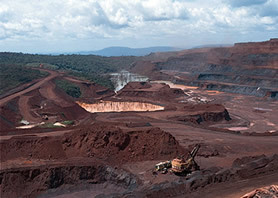After the decline of sugarcane, the Northeast ended up losing the position of concentrating power and wealth, but the sugarcane mills ended up leaving a legacy of practices policies that resist to the present day, with the imposition of interests of traditional families and groups linked to agribusiness, involving the concentration of land and riches. Although drought has natural causes, its effects are aggravated by the “drought industry”, which corresponds to interests of local oligarchies, increasing income concentration and perpetuating practices such as coronelismo.
During the rubber cycle that took place in the Amazon, at the end of the 19th century, the Northeast region began to experience one of its most striking characteristics: an area of population repulsion. Hundreds of thousands of people from the Northeast, mostly fleeing the scourge of drought, headed for the latex extraction zones, especially in the states of Pará and Amazonas.
As the South and Southeast began to concentrate the most relevant economic activities and the main political decisions within the scope from the mid-nineteenth century, it was up to the Northeast to maintain an agrarian reality, with strong economic and structural.
Until the first quarter of the 20th century, monoculture agriculture still represented the main economic activity in the region, along with extensive cattle raising. From the 1950s onwards, the construction of hydroelectric plants, highlighting the Paulo Afonso plant (Bahia), inaugurated in 1955, the expansion highways and tax incentive policies began to attract companies from diversified sectors to the region, as well as the discovery of Oil on the coast of Bahia and Rio Grande do Norte, responsible for the formation of petrochemical complexes, which attracted branches correlated.
In the early 1960s, SUDENE (Superintendence for the Development of the Northeast) was created, an initiative of the federal government to develop economically and socially the region, which organized surveys for the construction of irrigation projects, agricultural training and projects industrial. Unfortunately, most of the projects devised by the institution ended up benefiting mills and exporters of agricultural products.
Do not stop now... There's more after the advertising ;)
The industrialization process in the Southeast and the South caused, in the beginning of the 1950s, the intensive migration of the Northeastern population looking for work in industry and commerce in cities that were beginning to prosper, especially in the metropolitan region of São Paul. Due to the lack of planning in all regions involved, this population concentration was not monitored of improvements in education, health, basic sanitation and housing in the areas that received this contingent of Northeasterners. Efficient public policies to secure this population in a balanced way and with social guarantees did not occur in the areas of origin of these immigrants either.
Entrepreneurs needed cheap labor, and northeasterners sought these occupations. As an immediate result, the disorderly growth of several Brazilian cities occurred, perpetuating professional disqualification and social inequalities.
Northeastern migrations to the South and Southeast began to decline during the 1990s. At first, this fact is related to the process of industrial deconcentration that took place in large centers. Since the presentation of the 2000 census data, the return migrations, mainly of northeastern people, to the states of origin, either by the state of social degradation found in the areas where they live or by the surge of economic growth that is taking place in some localities Northeastern regions.
Several structural works (some of them related to the 2014 World Cup, power generation, Transposition of the São Francisco), discovery of ores and the arrival of industries from different sectors contribute to this phenomenon. Potentials related to tourism and traditional activities have the capacity to strengthen the links between the resident population and their territories, but they are not yet being carried out in order to take advantage of all this potential.
Julio César Lázaro da Silva
Brazil School Collaborator
Graduated in Geography from Universidade Estadual Paulista - UNESP
Master in Human Geography from Universidade Estadual Paulista - UNESP
Would you like to reference this text in a school or academic work? Look:
SILVA, Julius César Lázaro da. "Economic History of the Northeast Region: from the 20th century to the present day"; Brazil School. Available in: https://brasilescola.uol.com.br/brasil/historia-economica-regiao-nordeste-seculo-xx-aos-dias-atuais.htm. Accessed on June 27, 2021.

